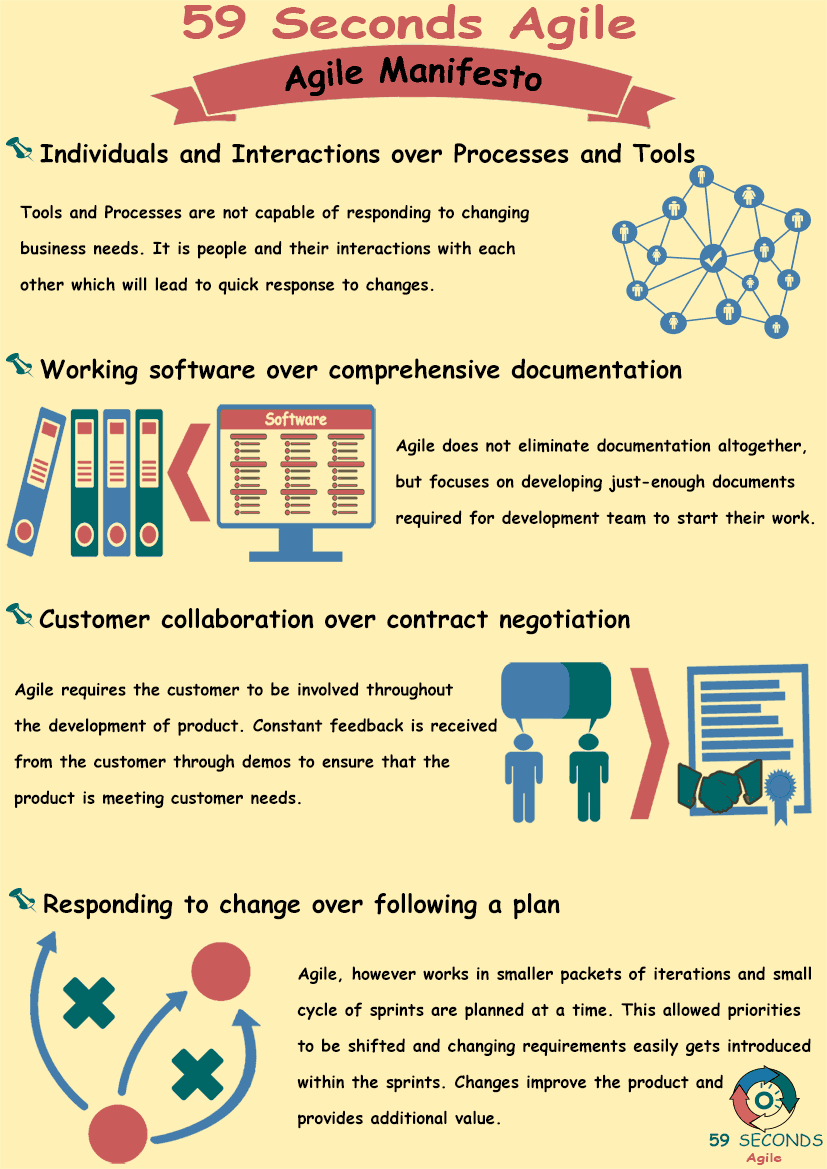Using the Agile Manifesto to Deliver Change
A 59 Seconds Agile Training Video
Continue to Part 3 Below
The Agile Manifesto
A 59 Seconds Agile Article
This article provides an ‘Introduction to the Agile Manifesto’ and looks to discuss what a values are stated within the Manifesto.
The Problem Areas
There are problem areas that many development teams encounter as they implement projects. One of these problems is ‘not testing as you go’. By now, most development teams understand the need to be testing throughout the process.
Since Agile was created to reduce inefficiencies, it’s still worth repeating: if you’re not testing as you go, you’re running the risk of causing major backups later, whether it’s bug hunting or discovering an item that previously worked is now broken.
Whatever the issue, it is usually a lot easier to prevent a problem at the beginning of a development cycle than scramble for a fix at the end. Another problem is communication breakdowns.
Agile is intended to increase transparency and visibility throughout the development process. Some of this can be managed through data, but it’s also reliant on team members being proactive when communicating progress.
For example, if a feature is lagging behind schedule, team members need to have the confidence and freedom from harsh consequences to say so. Conversely, if a project is running ahead of schedule, making stakeholders aware allows more time for additional work on other areas.
Continue Reading —> Next
The Agile Manifesto
A 59 Seconds Agile Video Animation
Continue Reading —> Next
User Stories Applied
A 59 Seconds Agile Book Review
User Stories Applied by Mike Cohn is one of our favourite books on Agile User Stories. The book starts with an overview into user stories, and details what a user story is and the different aspects of them. He then discusses how to go about writing a user story, and provides details of the INVEST criteria that can be used to determine if the story is meeting all of its objectives. Next Mike gives an in depth discussion of who user stories are written for and where to begin when gathering the details for them. The book then discusses acceptance testing user stories, including how to go about specifying these criteria and the responsibilities of the development team and customers during this process.
Continue Reading —> Next
The Agile Manifesto
A 59 Seconds Agile Infographic

Continue Reading —> Next
Agile Scrum Master Training Course
Our Favourite Agile Books
We found these books great for finding out more information on Agile Scrum:
Continue Reading —> Next

